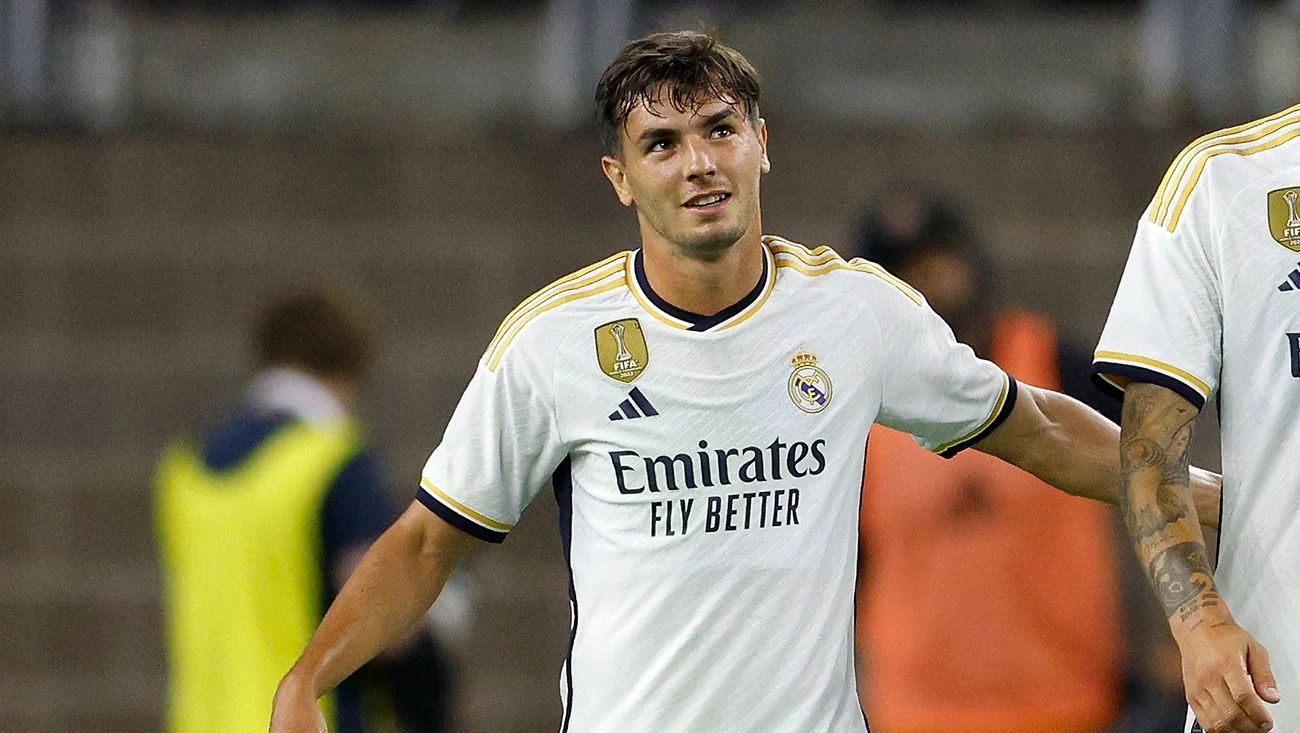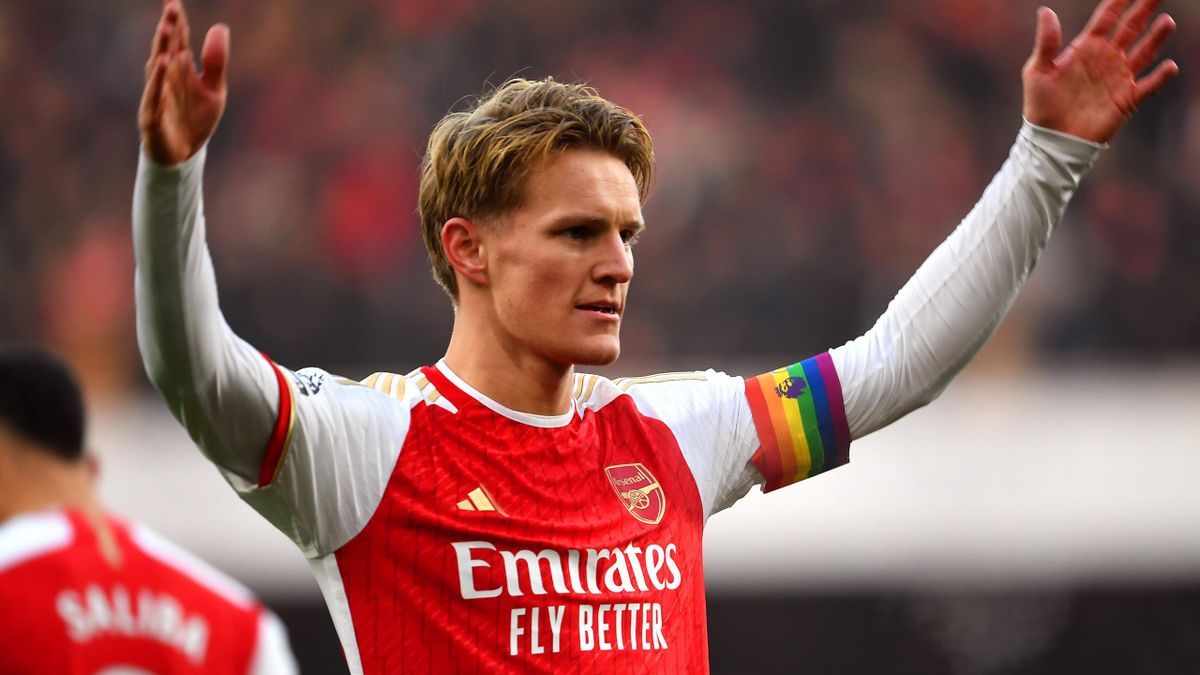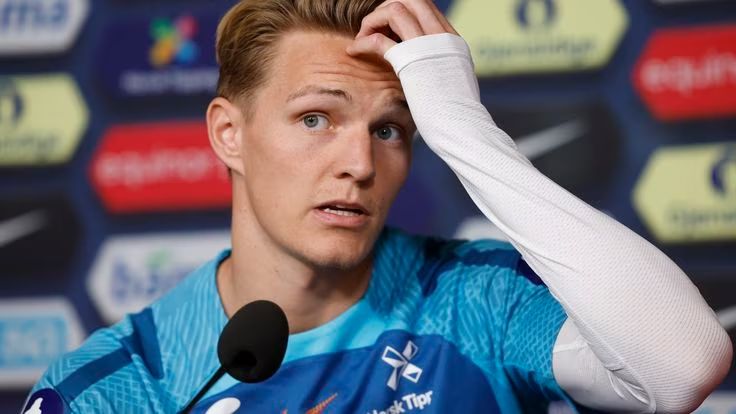The Martin Ødegaard derby: Real Sociedad vs Real Madrid – the team he said he wanted to play for this season hosting the team he is playing for this season. The young attacking midfielder started Madrid’s first game of the season and showed moments of his talent as well as glimpses of uncertainty, but overall the game posed big questions about how the champions will be able to set up their midfield this season to find success.
Los Blancos seemed to alternate between a 4-4-2 formation off the ball, with Ødegaard joining Karim Benzema in the forward line to lead the pressure, and something resembling a 4-2-3-1 in possession, with the Norwegian dropping off the French striker and being flanked by Vinícius and Rodrygo. Through the game, Ødegaard moved into deeper spaces to try to link up with the midfield pair of Toni Kroos and Luka Modric, with the German playing the deeper of the pair in the more defensive role in absence of Casemiro, a system that didn’t go very well in some games last season.
Ødegaard struggled to have an impact in the first half in a game that lacked fluidity, with Real Sociedad’s deep defensive lines stifling a Madrid team that could not find the killer edge. The attacker lacked connection with Benzema, and his link up play with the midfielders yielded little reward. There were moments too where his half-turns receiving a pass were easily read by his former teammates and Real Sociedad defenders were able to shut the move down.
When the game opened up in the second half, Ødegaard was most effective in transitional moments, carrying the ball himself on the break from midfield and unleashing a cleverly timed pass when the home team’s resolute defensive block was out of shape. In the 52nd minute, he set up Benzema for a decent chance with a through ball that split the Sociedad defenders, but the pass perhaps could have been hit slightly harder, as by the time the Frenchman got his shot away, it was safely blocked.
Zidane changed the midfield significantly in the 70th minute and Odegaard’s day was done, after a period where it looked like Real Sociedad were beginning to find a little more space in the Madrid half. This saw the middle trio become a more familiar shape of Casemiro, Toni Kroos, and Fede Valverde. A defensive move, on paper, but the substitutions didn’t do much to close the gaps that the Basques were able to find moving forward, while Valverde was given the more advanced role but had little effect on the game.
Whether it was early season rustiness or a tactical incompatibility, Zidane will be left frustrated by what he saw from his side, as they held onto the ball for the majority of the game but created few chances to speak of, while also finding themselves exposed at times when their opponents attacked.
Regardless, Zidane said he was happy with Odegaard’s first appearance in this era of his Madrid career. “It’s the first game and we’ve only had three weeks,” the manager explained to media after the game. “Little by little we’ll improve with Odegaard. We all need to be calm, we lacked something up front, but we have to be calm,” he said.
Loan move shortened
Martin Ødegaard was planned to spend two years on loan in San Sebastian before returning to the current La Liga champions, but this temporary stay was cut in half when Los Blancos decided not to allow him to stay for that second year.
By all accounts, the player wanted to stay at La Real, where he was a core component to the vibrant young team that excited and surprised La Liga fans last year, qualifying for the Europa League and reaching the Copa del Rey final – which has yet to be played, delayed due to the pandemic, but with a guarantee to play it against Basque neighbours Athletic Bilbao whenever fans are allowed to attend.
At La Real, Ødegaard excelled in his first season as a regular starter in a team in one of Europe’s best leagues. It is such a shame to see Ødegaard taken away from that consistency and opportunity at such a pivotal stage of his career, when it looked like his game was developing very excitedly.
The player could yet be given the same chances at Madrid, but unless he hits the ground running and quickly wins the confidence of Zidane, then minutes are always going to be more difficult to come by at a club like Real Madrid.
How does Zidane reorganise Madrid’s midfield?
Ødegaard will be competing for a place in the team with some of the best players in the world, but for which position exactly is not quite clear yet. At Real Sociedad he was mostly used in the line just behind the lone striker in a 4-2-3-1, but Zinedine Zidane’s preferred formation has been a 4-3-3, while in the opening game he decided to stray from the tried and trusted perhaps in order to fit the Norwegian in something more of a ‘number 10 role’ behind the striker.
Ødegaard showed last season that he has the traits to perform in one of the midfield positions, which long-term will likely put him in competition with a 35-year-old Luka Modric and a 30-year-old Toni Kroos. Despite their ages, they are clearly still two of the best midfielders in the world, but not without their flaws as they showed before the coronavirus-forced break last season when Real Madrid’s midfield often looked static and lacking in ideas. The 21-year-old could provide the necessary competition to keep Modric on his toes or the two could even rotate in the starting XI, but neither of these possibilities gives the Norwegian starlet the consistency to develop his game like he got last year up north.
Will Ødegaard be able to dislodge these already Madrid legends in these positions? It’s possible, but it could likely come down mostly to the form of Modric and Kroos. When they’re tuned in, as they were in the post-lockdown final stretch of last season, there’s hardly a better midfield in world football, when of course added with Casemiro who was one of Madrid’s best players last season and is unlikely to see his position in question. But if the form of Kroos and Modric replicates their early 2019/20 performances, possibilities could emerge for Odegaard.
Then, there’s the question of where Fede Valverde fits in, who will also add to the competition for places in a limited side that has been so settled in recent years. Valverde’s all-action, high-impact performances grabbed attention and admirers in a breakout campaign for him last year, and no doubt he will look to try seal more minutes this season too.
Alternatively, there could be space for Ødegaard wide in the front three. The youngster is certainly not a winger, so if used in this position it could likely be in more of a withdrawn role and moving more centrally, playing in similar spaces between the midfield and forward lines as he did last season and in the first game against Real Sociedad. Although, in that opening game, Zidane made changes in these wide positions as he felt a lack of width prevented them from creating any goal-scoring opportunities. Ødegaard would not provide the solution the manager was looking for in that instance.
If he were used in a withdrawn role in that position, he would be competing for spaces against – while offering a very different playing style to – Eden Hazard, Marco Asensio, Vinícius Júnior, Rodrygo, Mariano Díaz, and the forgotten man Isco, whose type of game could be described in relative similar terms to Odegaard, but who has not been able to find a place in the Real Madrid team for years now and whose career looks to be waning at this point.
Zidane has work on his hands to make this midfield perform to the extremely high level that’s expected of them. Real Madrid won the league last year as probably the most underwhelming champions in recent memory. At the moment, Zizou has an array of aging world class midfielders, some very talented but inexperienced wingers, and a couple of attack-minded playmakers whose positions are yet to be defined in the side to create a middle third out of.
Either he finds the formula to make it work, or they are again crowned underwhelming champions, or else they will lose their grip on the title next season.
Elsewhere…
While Celta Vigo signed Nolito at the back end of last season, he will be the summer arrival that will have the biggest impact on this season for the Galicians, no doubt. Celta’s opening goal in their win over Valencia showed why Nolito can not only change the fortunes of Óscar García’s side, but he can go on to become one of the best performers in La Liga this year.
His dizzying run through the heart of the Valencia team, evading confused defenders with sublime control before releasing a perfect pass to forward Iago Aspas to round the keeper and score, was Messi-like. If Celta’s forwards click like they did for that goal for the rest of the campaign, they could be on for a much more comfortable campaign in 2020/21.
What a week it has been for Granada. The Andalusians sit top of the table, with 6 points from 6 following their win against Deportivo Alavés, and enjoyed their first-ever European game during the week: a 0-4 victory over Albanian side Teuta. They face Locomotive Tbilisi at home in the next qualifying round, and should they get past the Georgians they will be just one playoff tie away from their first ever European group stage appearance.
At 35 years of age, Álvaro Negredo is back scoring goals in La Liga, and for the first time in 15 years, Cádiz have tasted victory in the Spanish top-flight. The ex-Sevilla and Valencia hitman opened the scoring in his side’s 0-2 win over Huesca, in what could turn out to be a vital three points against a side probably expected to be relegation rivals this season.
Goal of the week: William Carvalho’s thumping volley to double the lead for Real Betis over Valladolid. Along with Granada, Betis are the only other side with maximum points earned from two games.
William Carvalho with a STUNNER from distance! 😱
What a beautiful volley from the Betis midfielder 😍 pic.twitter.com/qMW5EICkD7
— Premier Sports 📺 (@PremierSportsTV) September 20, 2020




